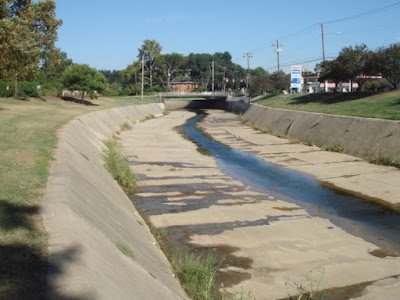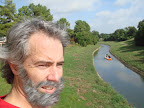Apparently these bayous once helped build Shreveport. Barges would unload supplies at Oakley, Gilbert, and Fern, and the turn around was where it now crosses under Alexander.

More recently, Bayou Pierre was used for boating, fishing and swimming, and without health consequences not so long ago. I recently met a beautiful, fit, 70 year old women who swam as a child in the very place pictured here!
Our bayous are public spaces that run throughout our neighborhoods. But the engineers who devoted them exclusively to drainage, decades ago, probably weren't aware of the importance of greenspace within cities to the health and happiness of their residents.
But it's a well-established fact by researchers that a city's amount of park space is directly related to it's citizens' quality of life, not to mention the amount of money produced by it's economy because it's citizens want to invest in it.
Many cities are in the same position as ours, with few sidewalks and parks, let alone the hot new innovation of "greenways" that effectively combines the two. But very few cities have the opportunity to create a network of beautiful, tree-lined, linear parks.
Some before and after shots for the sake of our imaginations:


And, who's to say we shouldn't find a way to enjoy the water?

or that we should age much in the process?











